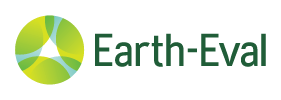A Composite Methodology Approach to Bridging Private-Public Climate Compatible Development Goals
Hello, my name is Quinn Reifmesser and I am honoured to have been invited to share a blog about the Renewable Energy and Energy Efficiency Partnership's (REEEP's) newly developed Monitoring and Evaluation (M&E) Strategy and Framework and accompanying paper, which will be presented at the 2nd International Conference on Evaluating Climate Change and Development this November 4th, 2014 in Washington, DC. We look forward to presenting the work we've done on our M&E framework to our peers, many of whose own M&E methodologies, strategies, publications and work in the field influenced our composite methodology design.
We are also looking forward to hearing feedback from colleagues representing the M&E, climate change and development sectors, as we launch the first cycle of our REEEP portfolio management to utilize the M&E framework. We are not only implementing a composition of methods we know the M&E community is excited to see implemented together, but are also monitoring and evaluating climate compatible development projects targeting the private sector and market growth – both of which represent demand driven and new, innovative territory to be explored.
The Context of our Work
REEEP was founded on the understanding that, for the sustainability movement to take hold it must be rooted in the modern market economy. REEEP was thus designed as a catalyst for market activity that would shift societies away from hydrocarbon-based energy toward renewable energy and efficiency, while bringing new energy access to those without. But straddling the private and public sectors in this area comes with challenges. To reconcile profit-seeking business activity with public good-seeking, donor-driven activities, REEEP needed to design a framework that would allow entrepreneurs to pursue business objectives unhindered, while also demonstrating the mechanisms through which those activities further development agendas. At the same time, REEEP works with entrepreneurs to uncover and promote policy solutions for governments to maintain new market inertia.
The challenge was clear, but the solution required innovation. Informed by our over 10 years of experience managing clean energy projects across the world, we based our work on a principle of "people-centered openness", in order to truly learn what is happening on the ground, and constantly feed those lessons back into our strategy and project planning. Of course, this would require a substantial shift in the engrained donor/recipient relationship, as well as in the behaviors that have guided so many progress reports through the same motions, using the same language – what those reading it on the other end want to hear.
People are the thread connecting lessons throughout M&E to successful climate compatible development – and long term impacts
REEEP's M&E framework is considered ‘enhanced' because it builds upon REEEP's own strengths and systems, and on existing methodologies that work – rather than create a new, untested strategy from scratch. The solution is a composite M&E framework incorporating elements of Theory of Change (ToC), Logical Framework Approach (LFA), Outcome Mapping (OM) and Most Significant Change (MSC). On their own, these methods are familiar to our peers; however, based on our research and extensive peer reviews, the innovation is in the application, the context, and the combination of these methods. The methodology strikes a balance between planning and flexibility. While strategizing at the programme and then project level, ToC and LFA are employed using a high level road map with logical steps to achieve organizational goals based on market research, expertise and lessons learned. Strategic planning helps in evaluating project proposals, and understanding how preconditions for market growth are translated to deliverables, activities, outputs and outcomes. While ToC and LFA planning sets the stage of intention – it is the use of OM to project and monitor behavioural change alongside MSC that helps to discover what was truly successful or not on the ground – through people, and fostering open and trusting relationships.
The exciting challenge we are facing is not only applying this composite methodology approach to climate compatible development projects, but also to monitor and evaluate our private sector partners and stakeholders through a development lens. So to our peers we ask, do you have experience in monitoring and evaluating private sector/for-profit partners in a development context, and how have you tailored methodologies, language and relationships to manage public-private partnerships through a business and development lens simultaneously? Please let us know by commenting below.



